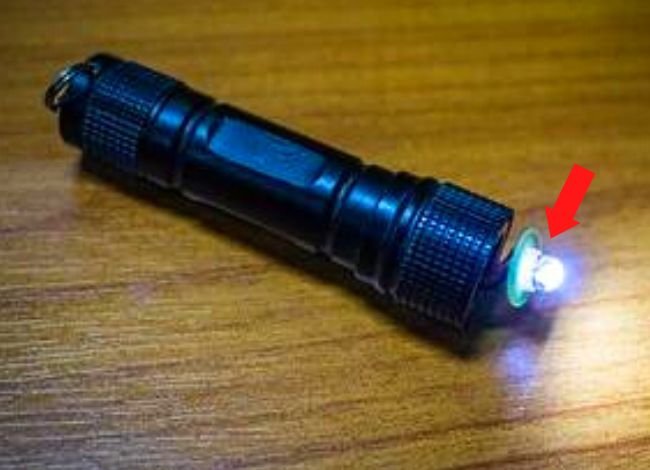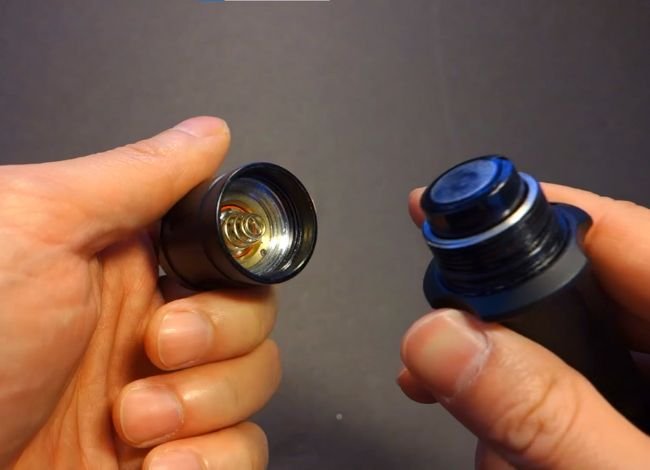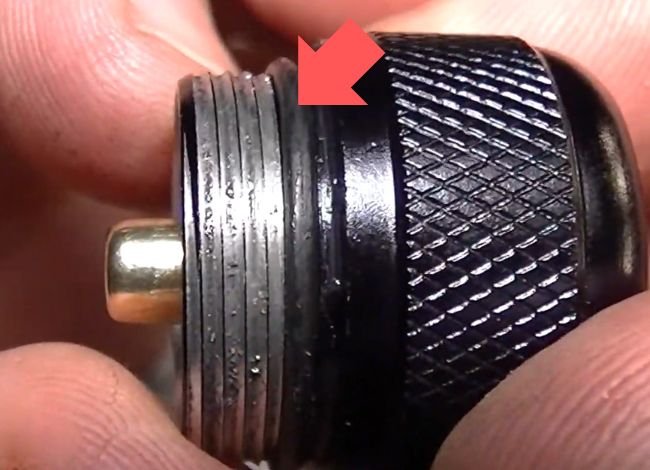Last Updated on September 10, 2025
Flashlights are essential tools in emergencies, outdoor adventures, and daily tasks. But what happens when your flashlight grows dim? Many users assume it’s time to throw it away. However, dimming is a common issue that can often be resolved with simple checks and minor repairs. Instead of discarding a perfectly good flashlight, understanding the root causes and how to fix them can save both time and money.
In this complete guide, we’ll walk you through all the possible reasons why your flashlight grows dim, how to fix them, and how to maintain your flashlight for optimal performance in the long run.
Why Does My Flashlight Grow Dim?
A flashlight losing brightness isn’t necessarily broken—it may just need a small adjustment or replacement part. Below are the most common reasons flashlights dim over time:
1. Expired or Depleted Batteries
Old or low-charge batteries are the most common culprit. When your flashlight grows dim, the first thing you should do is check the batteries.
- Alkaline batteries lose charge faster when stored for long periods.
- Rechargeable batteries degrade over time and hold less charge.
Fix: Replace with fresh batteries or recharge fully. Keep spares on hand if you’re in the field.
2. Loose or Corroded Battery Contacts
If the metal contacts inside your flashlight are corroded or not aligned properly, they may not conduct electricity efficiently, leading to dim light.
Fix: Clean the battery terminals with a small brush or alcohol swab. Realign or tighten the spring terminals if needed.
3. Bulb or LED Issues
Although LEDs last much longer than traditional incandescent bulbs, they can still dim or fail over time due to overheating, moisture, or manufacturing defects.
Fix: Inspect the bulb or LED component. If it’s flickering, burnt out, or dim despite new batteries, consider replacing the bulb or LED unit (if replaceable).
4. Damaged or Worn Wiring
The internal wiring connects the power source to the light. If this wiring becomes frayed, damaged, or corroded, it can reduce brightness or cause the flashlight to fail entirely.
Fix: Open the flashlight and look for damaged wiring. If you’re not confident in electronics repair, take it to a technician.
5. Faulty Switch Mechanism
The power switch plays a critical role in controlling the connection between the power source and the bulb. If the metal strips inside the switch are worn or corroded, the flashlight may operate at low brightness or flicker.
Fix: Open the flashlight and clean the switch with contact cleaner. Replace the switch if cleaning doesn’t work.
Check for Internal Dirt or Debris
Sometimes, the cause of dimming isn’t electrical but environmental. Dust, grime, or moisture buildup inside the flashlight can interfere with proper operation.
How to Clean Your Flashlight:
- Disassemble the flashlight.
- Use a soft brush or compressed air to remove dust.
- Clean battery compartments and contacts with alcohol wipes.
- Reassemble and test.
Maintaining cleanliness not only prevents dimming but also extends the life of your flashlight.
Other Common Flashlight Issues
While dimming is one of the most frequent issues, flashlights may encounter several other operational problems. Recognizing these can help you respond effectively and keep your device in top shape.
Flashlight Doesn’t Turn On
This could be caused by dead batteries, corroded terminals, a broken switch, or internal circuitry failure.
What to do:
- Test the flashlight with new or fully charged batteries.
- Open the unit to check for visible corrosion or wiring issues.
- If the switch feels loose or unresponsive, consider replacing it or contacting customer support.
Flashlight Flickers Intermittently
A flickering beam is often a sign of a poor electrical connection between the battery and the bulb or LED.
What to do:
- Clean battery terminals and contacts.
- Tighten all screw caps and connection points.
- Make sure the battery fits snugly in the compartment.
Water Infiltration
Even waterproof flashlights have limits. Prolonged submersion or a cracked casing can allow moisture to enter.
What to do:
- Open all components and dry the flashlight completely.
- Remove batteries to prevent corrosion.
- Use a desiccant (like silica gel packs) to absorb residual moisture.
Switch Failure
The power switch is a mechanical component that wears out over time. Dirt or internal corrosion can disrupt its function.
What to do:
- Use compressed air or contact cleaner to remove dirt.
- Replace the switch if it no longer connects properly.
Weak or Broken O-Rings
O-rings keep water and dust out. If they degrade or tear, internal components become vulnerable.
What to do:
- Inspect O-rings regularly.
- Replace damaged ones and apply silicone grease to maintain water resistance.
How to Prevent Flashlight Dimming in the Future
A well-maintained flashlight not only shines brighter but also lasts longer. Use these tips to prevent dimming and other performance issues:
1. Use High-Quality Batteries
Avoid generic or expired batteries. Invest in reliable brands like Energizer, Duracell, or Panasonic. For rechargeables, go for NiMH or Lithium-ion with good reviews.
2. Clean Your Flashlight Regularly
Dust and grime can affect connections and heat dissipation.
- Wipe down the outer body.
- Clean battery contacts with alcohol and a cotton swab.
- Inspect internal parts every few months.
3. Store in a Cool, Dry Place
Heat, humidity, and moisture accelerate battery degradation and corrode internal circuits. Use a sealed container if storing for long periods.
4. Follow the User Manual
Manufacturers provide detailed instructions on operation, cleaning, and maintenance. Following these improves longevity and protects warranty coverage.
5. Rotate Use if You Own Multiple Flashlights
Using the same flashlight constantly will wear it faster. Rotate between devices if you own more than one.
When to Replace Your Flashlight Instead of Repairing It
Sometimes, it’s more practical to replace a flashlight rather than repair it—especially if:
- The cost of repair exceeds the price of a new one
- It’s an old model with hard-to-find parts
- You need modern features like USB charging, strobe modes, or waterproof certification
Pro Tip: When buying a new flashlight, look for trusted brands, warranty options, and user reviews. Invest in a model that meets your usage needs (tactical, EDC, emergency, etc.).
Top Recommended Flashlights to Avoid Dimming Issues
While this article focuses on troubleshooting, here are a few flashlight models known for long-lasting brightness and durability:
- Fenix PD36R – Great battery life and waterproof
- Streamlight ProTac HL-X – Tactical use with USB charging
- Olight Warrior 3S – Advanced UI and intelligent brightness
- ThruNite TC15 – Compact, rechargeable, and high lumen
- Anker Bolder LC90 – Budget-friendly and powerful
These models are built to withstand rugged use and are less likely to suffer from dimming or failure if properly maintained.
FAQs: Flashlight Dimming and Maintenance
Q1: Why does my flashlight dim even with new batteries?
A: This can happen due to dirty or corroded battery terminals, faulty LED or bulb, or a malfunctioning switch. Clean all contacts and check internal parts.
Q2: Can I fix a dim flashlight myself?
A: Yes. In most cases, you can clean the terminals, replace the battery, or change the bulb yourself. More complex repairs may require a technician.
Q3: Are rechargeable batteries better for flashlights?
A: Yes, especially if you use the flashlight frequently. Rechargeables are more cost-effective and eco-friendly over time.
Q4: What causes flashlight flickering?
A: Flickering usually indicates a loose connection, weak battery, or switch problem. Check all contact points and replace the battery first.
Q5: Can water damage a waterproof flashlight?
A: Yes. Prolonged exposure or cracked seals can still allow water inside. Always dry it thoroughly and inspect O-rings after exposure to moisture.
Conclusion
When your flashlight grows dim, it’s not necessarily the end of its life. Most dimming issues stem from simple causes—low batteries, dirty contacts, or worn-out bulbs—that can be quickly resolved. By understanding the potential problems and performing regular maintenance, you can ensure your flashlight remains a reliable tool when you need it most.
Instead of throwing away a dim flashlight, take the time to diagnose and fix the issue. This practical approach saves money, reduces waste, and helps you get the most out of your device.
Stay prepared, stay illuminated. A well-maintained flashlight isn’t just a tool—it’s your trusted companion in emergencies, adventures, and everyday challenges.